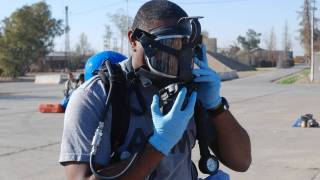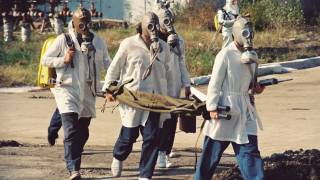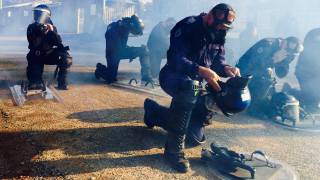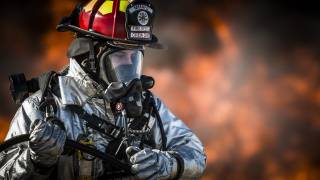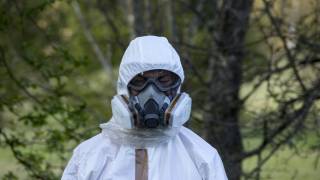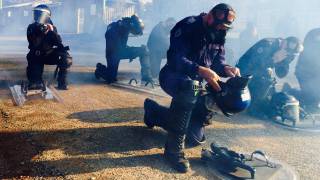Anthrax Vaccine Guidelines Updated by the CDC

Since the publication in 2010 of the Advisory Committee on Immunization Practices (ACIP) recommendations for use of anthrax vaccine in the United States, various studies have added new insights into preventing this serious disease.
With these new studies becoming available, the ACIP was asked to revise the recommendations for use of anthrax vaccines in the United States.
Published on December 13, 2019, by the Centers for Disease Control and Prevention (CDC), these revised recommendations apply to both pre- and post-exposure prophylaxis.
The risk of exposure to aerosolized B. anthracis spores in the United States is very low. Anthrax is only endemic in a few sparsely populated areas in the western United States, such as in southern Texas.
Anthrax is not contagious, which means you can’t catch it like the cold or flu, says the CDC.
The possibility does exist of an intentional wide-area aerosolized release of B. anthracis spores over a densely populated area in the United States. In 2001, letters containing B. anthracis spores sent through the U.S. Postal Service led to 22 cases of anthrax, 5 of which were fatal.
This new CDC report also describes the available data for the AV7909 vaccine candidate because of its potential for prelicensure emergency use during a large-scale anthrax public health emergency, if the current anthrax vaccine supply is inadequate to meet demand.
In addition, the AV7909 vaccine phase 1 and 2 clinical trials have demonstrated the potential of AV7909 for use as the vaccine component of PEP (PEP-Vx)
The CDC says ‘this report can be used by healthcare providers to update the current practice for providing anthrax vaccine for PrEP and PEP and can be used by emergency preparedness partners to develop emergency vaccine response plans in preparation for a wide-area aerosolized release of B. anthracis spores.’
Furthermore, this CDC report
- addressed the efficacy, immunogenicity, and reactogenicity of the recommended and alternate dose-sparing schedules of AVA
- estimated AVA efficacy in humans from data on animal efficacy and human antibody levels by using a correlates of protection model
- evaluated whether developing chronic illnesses or having adverse pregnancy outcomes are associated with previous AVA receipt
Anthrax vaccine adsorbed (AVA)
- BioThrax is licensed for preexposure prophylaxis (PrEP) for adults aged 18–65 years at high risk for exposure to B. anthracis (6). The dosage approved by the U.S. Food and Drug Administration (FDA) is 0.5 mL administered intramuscularly (IM) at 0, 1, and 6 months with boosters at 6 and 12 months after completion of the primary series and at 12-month intervals thereafter.
- BioThrax is also is licensed for postexposure prophylaxis (PEP) in combination with antimicrobials for adults aged 18–65 years with suspected or known exposure to aerosolized B. anthracis spores. The dosage approved by FDA is 0.5 mL administered subcutaneously (SC) at 0, 2, and 4 weeks. For persons not included in the FDA-approved indication for PEP, AVA will be available for PEP use for children, pregnant women, nursing mothers and older adults (i.e., ≥66 years) under appropriate emergency use regulatory provisions.
- Although data are lacking on the immune impact of mixing the IM and SC routes of administration, as might occur when switching from PrEP to PEP, switching between routes would be unlikely to adversely impact immunity because both routes provide adequate immunity.
AV7909
- AV7909 is an investigational 2nd-generation anthrax vaccine that is under development for PEP of inhalation anthrax in conjunction with appropriate antimicrobials. AV7909 consists of the licensed AVA combined with a novel adjuvant, CpG 7909, a synthetic immunostimulatory oligodeoxynucleotide. CpG 7909 is a Toll-like receptor 9 agonist that has been demonstrated to augment Th1 responses in humans and enhance innate and adaptive immunity.
- The CDC has submitted a pre–Emergency Use Authorization (EUA) request to FDA to allow potential emergency use of AV7909, in conjunction with appropriate PEP-Abx, for PEP of inhalation anthrax when the supply of the currently licensed AVA is inadequate. EUA is an authority given to the FDA commissioner to legally permit the use of an unapproved medical product or unapproved use of an approved medical product.
- Under the proposed EUA, AV7909 would be administered by the IM route as a 2-dose series 2 weeks apart in conjunction with PEP-Abx for adults aged 18–65 years. Pregnant or nursing mothers, older adults (aged ≥66 years), and children (aged <18 years) should receive AVA until data to adequately support AV7909 use in these additional populations under EUA become available.
- Available data indicate that AV7909 might provide the following advantages over AVA, such as: Two IM doses of AV7909 administered 2 weeks apart might provide protective immunity 1–2 weeks sooner than the licensed 3-dose PEP-Vx regimen of AVA.
The CDC says ‘This report can be used by health care providers to update the current practice for providing anthrax vaccine for PrEP and PEP and can be used by emergency preparedness partners to develop emergency vaccine response plans in preparation for a wide-area aerosolized release of B. anthracis spores.’
The U.S. government’s Strategic National Stockpile (SNS) stores anthrax vaccine to be used with antimicrobials for PEP of persons with known or potential exposure to B. anthracis spores, as well as therapeutics and supplies for anthrax treatment.
Recent anthrax vaccine news
- Next-Gen Anthrax Vaccine To Launch Phase 1 Study
- BARDA Exercises $261 Million Dollar Option for Innovative Anthrax Vaccine
- Anthrax Vaccine Candidate NanoVax Awarded Patent
- BARDA to Purchase Anthrax Vaccine for Strategic Stockpile
- Dual Protection Vaccine Candidate Against Anthrax & Plague Advances
Animal models have shown that although 5–30 days of antimicrobials might be insufficient to prevent anthrax after single exposures or reexposures to B. anthracis spores, the addition of vaccine substantially enhances efficacy.
In the event of a large-scale release of B. anthracis spores, the SNS will distribute medical countermeasures to affected states, and state and local public health agencies will then dispense antimicrobials to and vaccinate numerous at-risk persons.
Antimicrobials are given long enough (up to 60 days) to prevent infection until the vaccine can elicit a protective immune response, says the CDC.
Recently, the U.S. government’s preparedness program progressed into a new stage, real-world testing in St. Louis, Missouri.
According to the St. Louis Public Radio (SLPR) news article on November 7, 2019, emergency volunteers in St. Louis are among the 1st to receive an anthrax vaccine, as part of a 2-year pilot program to inoculate local personnel.
If this program is deemed a success, then the anthrax vaccination program could be implemented across the USA.
Anthrax Vaccine news published by Precision Vaccination
Our Trust Standards: Medical Advisory Committee





